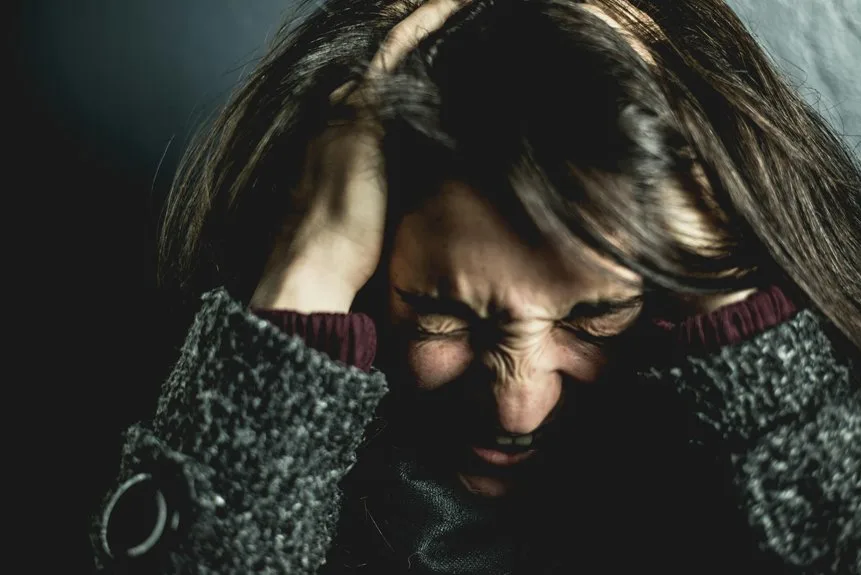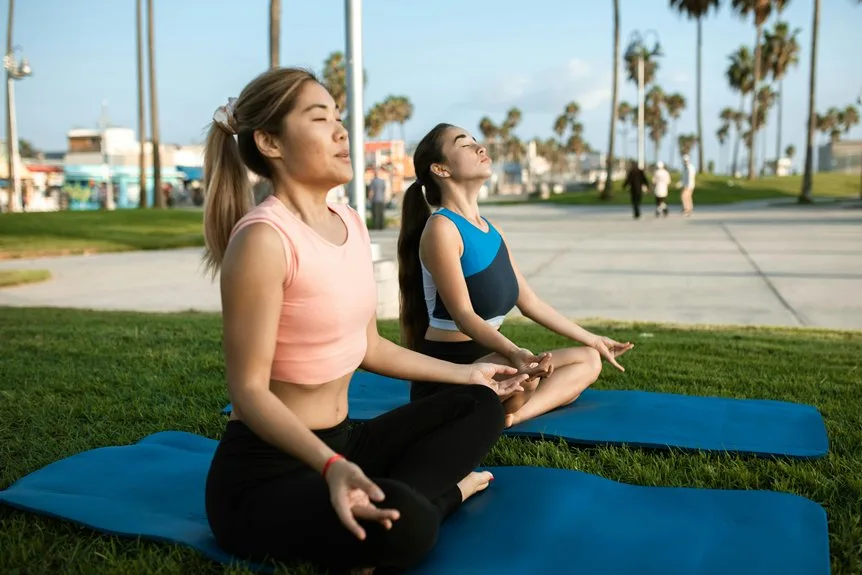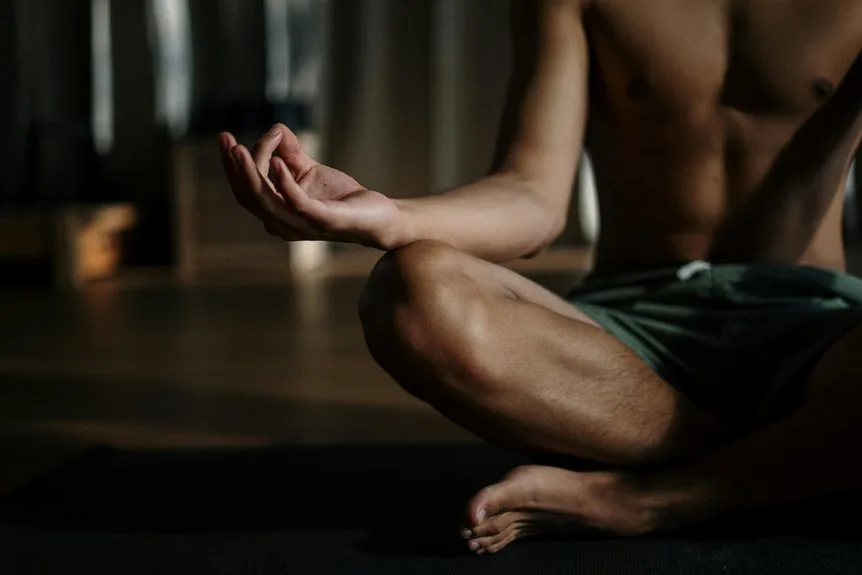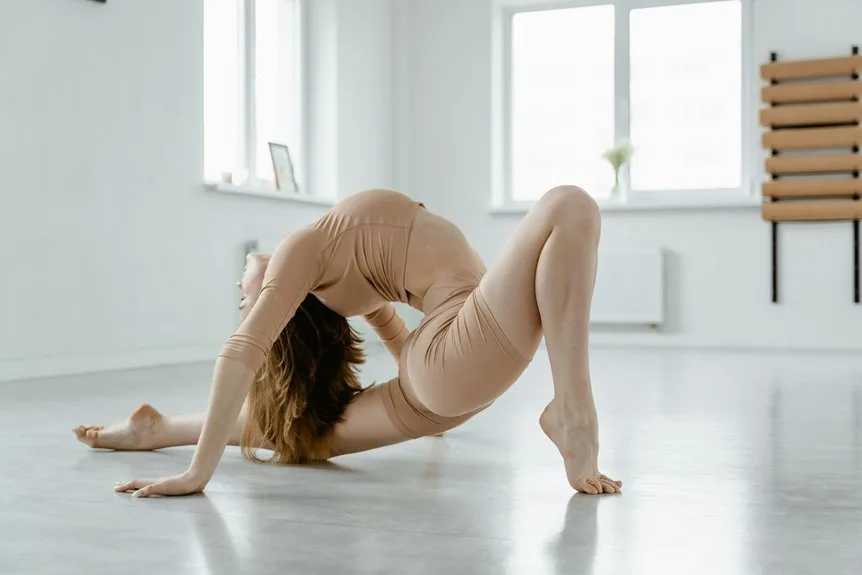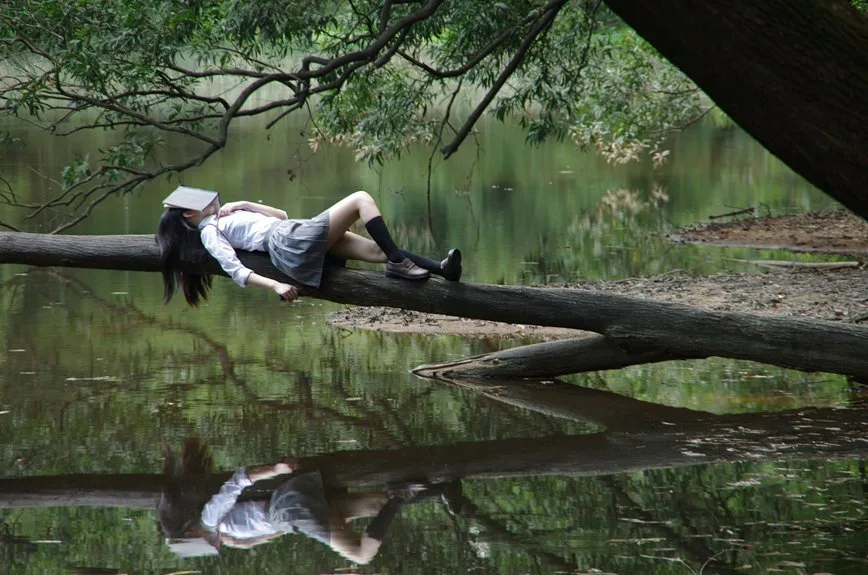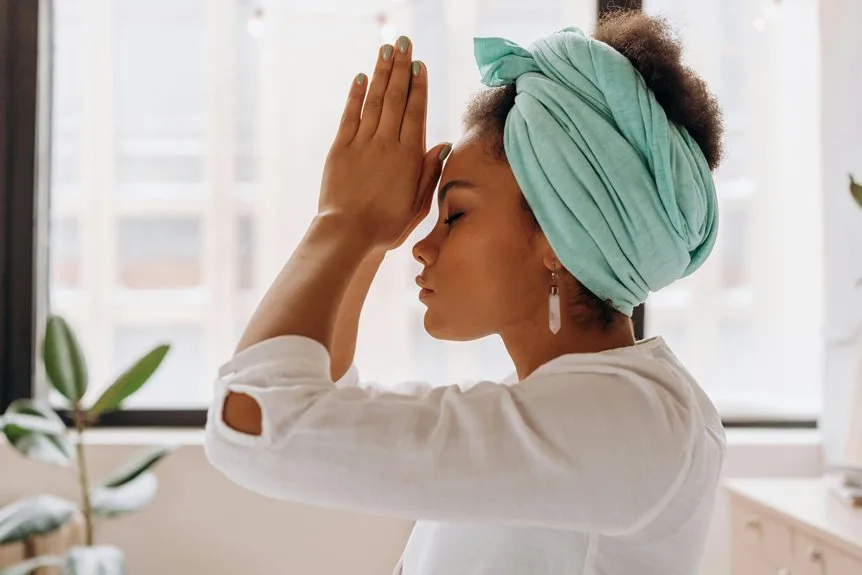Many people find that anxiety sneaks up when least expected, making daily life feel overwhelming. Mindfulness meditation offers practical tools to steady the mind, from focusing on deep breaths to scanning the body for tension. These techniques don’t require fancy equipment or hours of free time, just a willingness to pause and notice what’s happening inside and out. Curious about how these simple practices can actually calm anxious thoughts? There’s more to uncover.
How Meditation Eases Symptoms of Anxiety
Ever wondered why meditation seems to be everywhere these days, especially as a remedy for anxiety? Meditation works by promoting brain relaxation and calming the amygdala, which is like the brain’s personal alarm system. This leads to stress reduction and fewer physical symptoms like racing heartbeats or tense muscles. Mindfulness meditation teaches individuals to notice anxious thoughts without judging them, stopping those thoughts from taking over. Over time, regular practice triggers the body’s relaxation response, enhances mood, and builds emotional resilience. At places like Two Bunch Palms, the focus on wellness and balance as a lifestyle can further encourage the benefits of mindfulness meditation.
Science-Backed Benefits of Mindfulness for Anxiety
While the calming effects of meditation are easy to notice, many people are curious about whether science truly backs up its anxiety-reducing reputation. Evidence shows that mindfulness meditation reduces symptoms of anxiety, with research suggesting up to a 30% drop in severity after just eight weeks. Randomized controlled trials highlight mindfulness-based stress reduction as equally effective as some traditional therapies for mental health. Neuroimaging studies reveal that meditation enhances emotional regulation by activating brain regions linked to calm and focus. Plus, mindfulness lowers stress hormones like cortisol. Together, these scientific findings create a sense of trust and belonging for those seeking relief. For those wanting to combine relaxation with exploration, the Calistoga Motor Lodge offers a unique retreat experience surrounded by vineyards and bike trails, ideal for mindful adventures.
Key Meditation Techniques for Anxiety Relief
Curious how meditation can help soothe anxious thoughts? Many find comfort and connection through mindfulness meditation, which offers powerful relaxation techniques for anxiety relief.
Here are three key methods that encourage stress reduction and greater emotional resilience:
- Mindfulness Meditation: Focuses attention gently on the present moment—often breath or sensations—building awareness and mental health benefits.
- Body Scan: Guides attention through different body parts, easing tension and supporting deep relaxation.
- Guided Meditation & Breath Awareness: Uses soothing prompts or breathing exercises to anchor the mind, slow the nervous system, and make meditation practice accessible for lasting anxiety relief.
For those seeking a tranquil environment to practice these techniques, Solage, Auberge Resorts in Napa Valley offers a serene setting that combines relaxation with wine and craft cocktails, perfect for unwinding.
Tips for Practicing Meditation During Anxious Moments
How can someone find a moment of calm when anxiety seems to take over? When anxious moments strike, focusing on the breath—slow, deep inhales and gentle exhales—can help spark the body’s relaxation response. A quick body scan, tensing and releasing muscles, shifts attention from swirling thoughts back into the present moment. Guided meditations, easily found on popular apps, offer a supportive voice and structure when it’s hard to ground oneself. Observing five sensory details in the surroundings brings mindfulness practice to life. If the mind wanders, simply returning attention with patience and self-compassion strengthens connection and belonging in the moment. For a more immersive experience, personalized wellbeing journeys offered by places like Sensei Porcupine Creek can guide individuals to deeper relaxation and self-awareness.
Building a Sustainable Meditation Routine for Ongoing Support
One of the most effective ways to make meditation a lasting part of daily life is to start small and build up gradually. A sustainable routine begins with short daily practice, perhaps just 10-15 minutes, in a quiet space.
Consistency matters more than perfection, and using guided meditations can help with habit formation. Progress tracking, whether through an app or journal, enhances motivation and a sense of belonging to one’s voyage.
As comfort grows, slowly increase meditation duration and stick to a regular schedule for ongoing support. Try these steps:
- Choose a quiet space and regular schedule.
- Use guided meditations.
- Track your progress.
Frequently Asked Questions
What Type of Meditation Is Good for Anxiety?
When considering meditation for anxiety, individuals may benefit from breathing exercises, body scan, guided imagery, loving kindness, focused attention, body awareness, walking meditation, sensory grounding, progressive relaxation, and visualization techniques, all nurturing connection, calm, and emotional support.
What Is the 3 3 3 Trick for Anxiety?
Coincidentally blending breathing exercises, body scan, and sensory awareness, the 3-3-3 trick for anxiety invites individuals to ground themselves through mindful observation and movement. This grounding exercise mirrors guided imagery, progressive relaxation, and visualization techniques, nurturing belonging and calm.
What Are Mindfulness Techniques for Anxiety?
Mindfulness techniques for anxiety include breathing exercises, body scan, loving kindness, visualization practices, mindful walking, sensory awareness, gratitude journaling, focused attention, progressive relaxation, and mindful listening. These approaches nurture connection, calm, and emotional support within a caring community.
Can Mindfulness Meditation Cure Anxiety?
Like a patchwork quilt, mindfulness meditation weaves together guided imagery, body scan, loving kindness, breath awareness, progressive relaxation, mindful listening, chakra balancing, visualization exercises, gratitude journaling, and sensory focus—managing anxiety symptoms, but not providing a universal cure.
Final Thoughts
Imagine sitting quietly, the world slowing down as you notice the gentle rise and fall of your breath, or the soft rustle of leaves outside your window. With each mindful moment, anxiety loses its grip, replaced by a steady calm. By weaving these meditation techniques into daily life—whether at home or somewhere as peaceful as Napa Valley—anyone can build their own pocket of peace, ready to pull out whenever life feels overwhelming.


